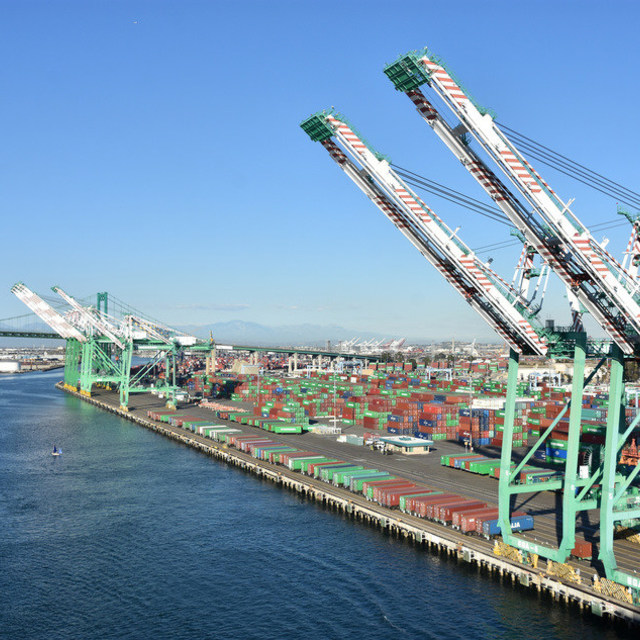SoCal Ports Highlight National Maritime Infrastructure Crisis

The US faces a critical maritime infrastructure crisis that threatens national security and economic competitiveness. The country’s maritime defense ecosystem is severely degrading, with facilities averaging 55 years old and some maritime locations being older than the nation itself.
A stark production disparity compounds this aging infrastructure; China builds 200 ships for every one ship the U.S. produces, highlighting America's diminished maritime manufacturing capacity.
Greg Matter, vice chairman and co-lead of JLL’s advanced manufacturing group, told GlobeSt.com that The Ports of Long Beach and Los Angeles, which together handle approximately 40% of all US containerized imports, exemplify both the concentration risk and the critical importance of West Coast maritime infrastructure to national supply chains.
This is due to the lack of Western regional hubs, which forces reliance on the Panama Canal for fleet repair and replenishment, creating dangerous vulnerabilities in national defense capabilities.
Workforce shortages and facility constraints create additional barriers to maritime sector growth, Matter said.
“The industry suffers from insufficient skilled tradespeople, with existing facilities in the Mid-Atlantic region saturated and new operations merely redistributing limited resources rather than expanding capacity,” according to Matter.
“Labor constraints are particularly acute, as demonstrated by foreign companies like those from Korea having to bring their own workers to U.S. facilities, with Korean becoming the primary language in some American manufacturing buildings.”
This workforce gap extends beyond construction to include the specialized trades needed for ship repair, port operations and maritime manufacturing.
The San Pedro Bay port complex, encompassing Long Beach and Los Angeles, serves as a critical case study where labor agreements and automation investments must strike a balance between efficiency and workforce development to maintain America's competitive edge in global trade.
“Despite these challenges, emerging opportunities in maritime innovation require immediate infrastructure investment,” Matter said.
New companies, such as Regent Craft, Blue Water Autonomy, Saildrone (based in Oakland), and Arc Boats (based in Los Angeles), are developing autonomous and electrified maritime technologies; however, they lack access to adequate shipbuilding facilities.
“These innovative companies face the impossible choice of either limiting their growth or investing billions in shipyard infrastructure that wasn't in their original budgets,” Matter said.
The bipartisan SHIPS Act, championed by senators from Arizona and Indiana, represents a recognition that maritime infrastructure investment is not just a coastal issue but a national economic and security imperative.
“The strategic importance of ports like Long Beach and Los Angeles underscores the need for distributed maritime capabilities along the West Coast to reduce bottlenecks and enhance supply chain resilience,” Matter said.
Source: GlobeSt/ALM